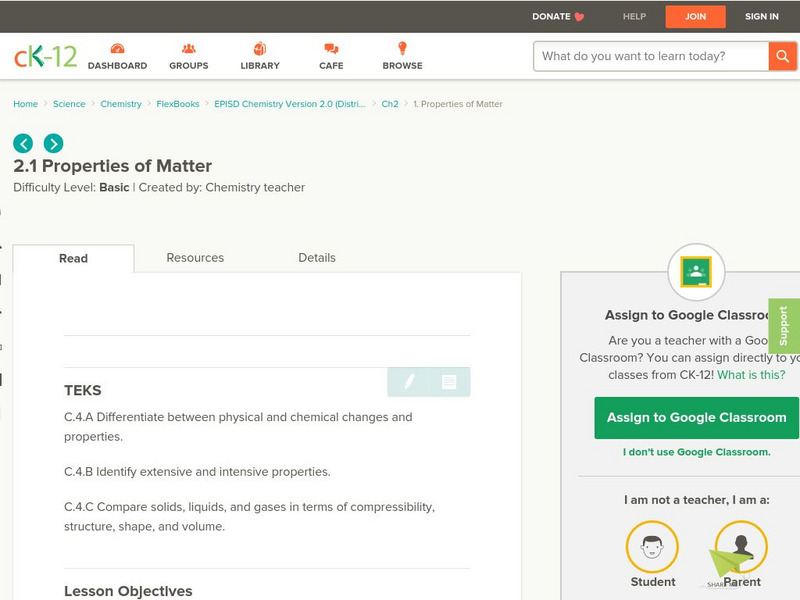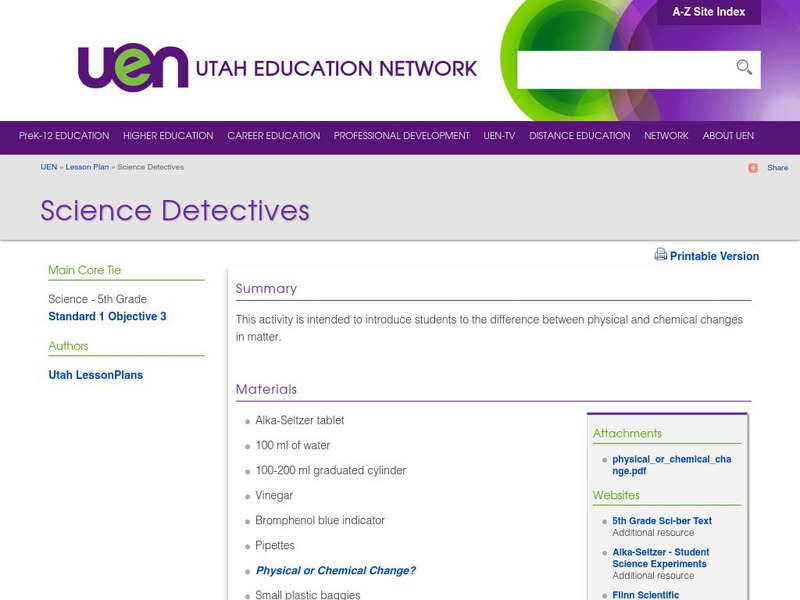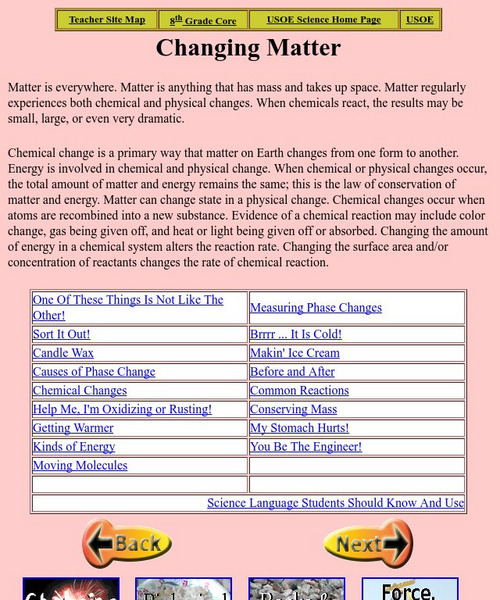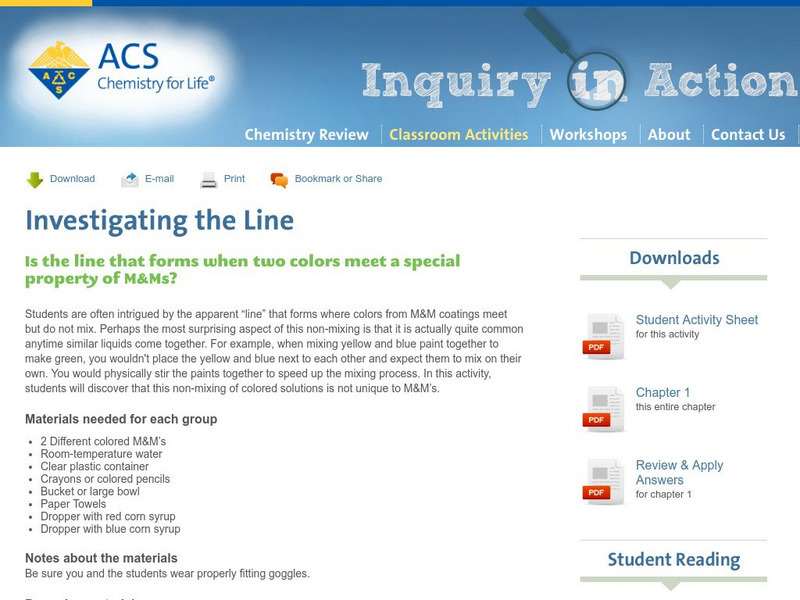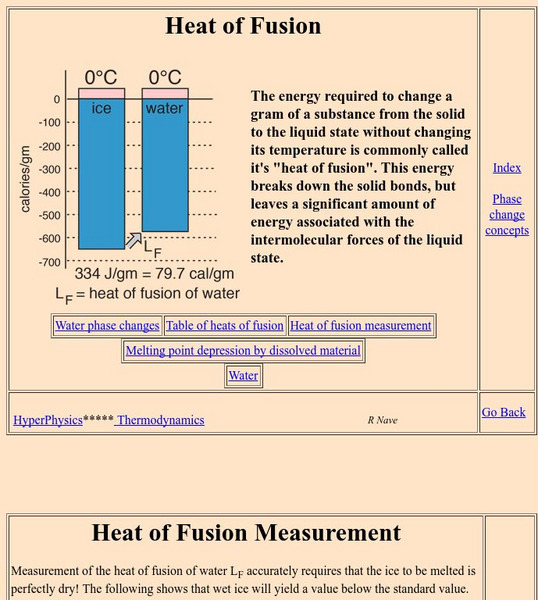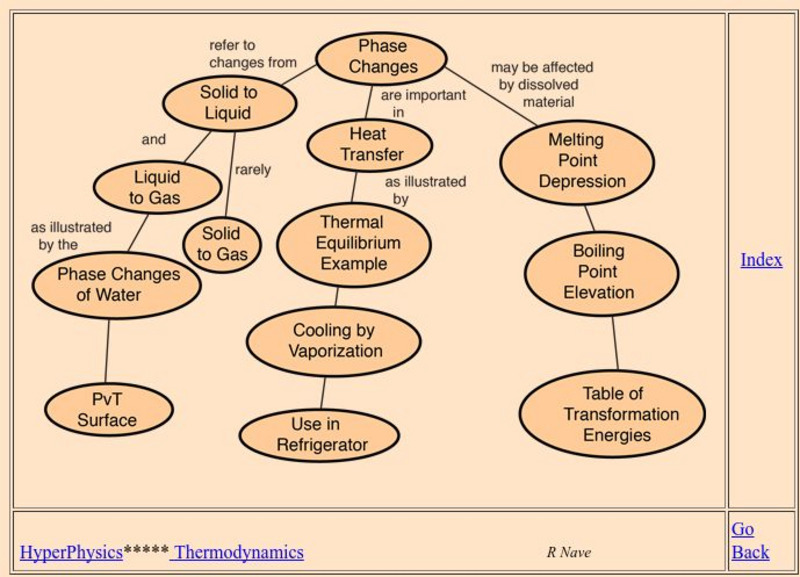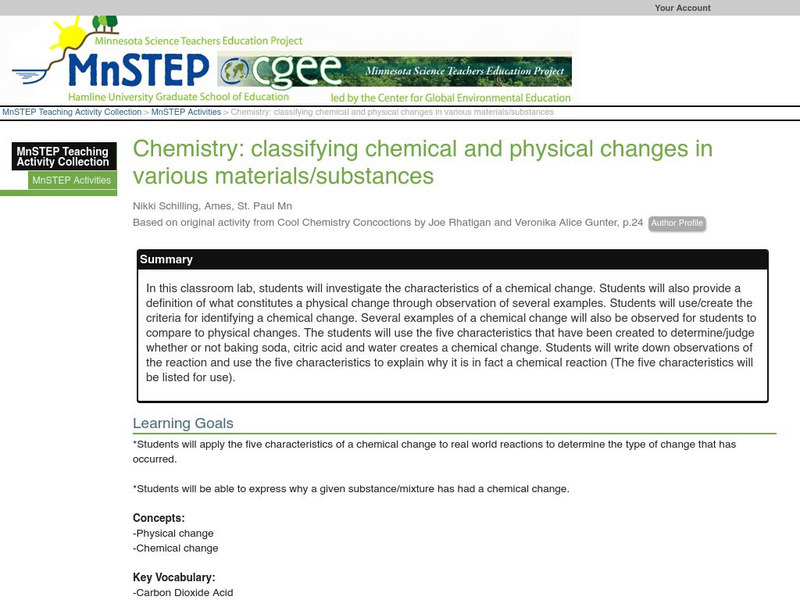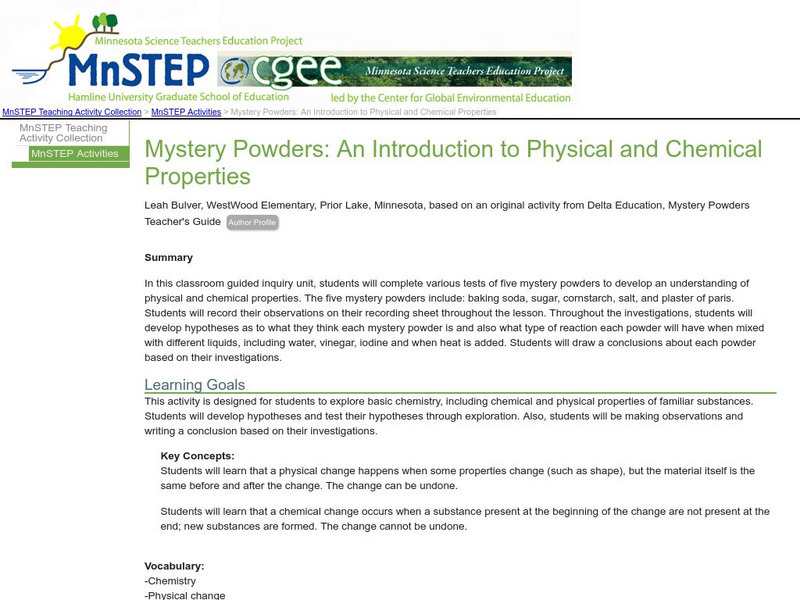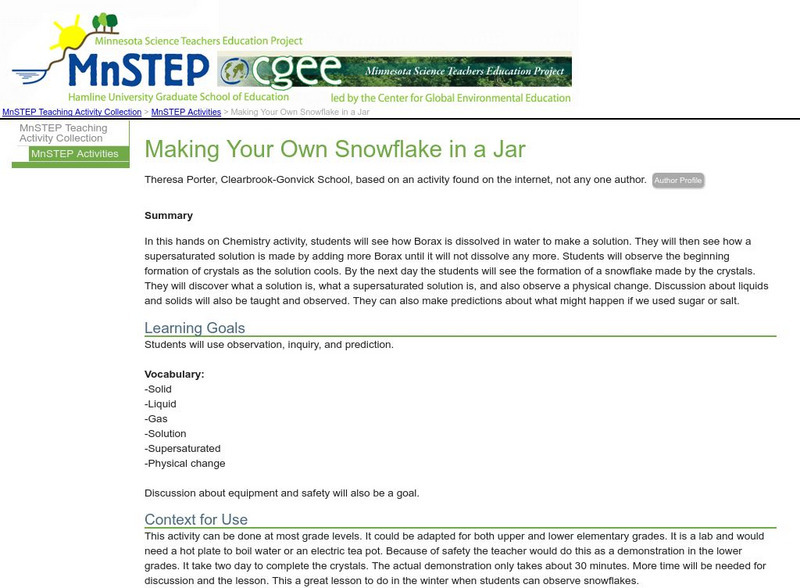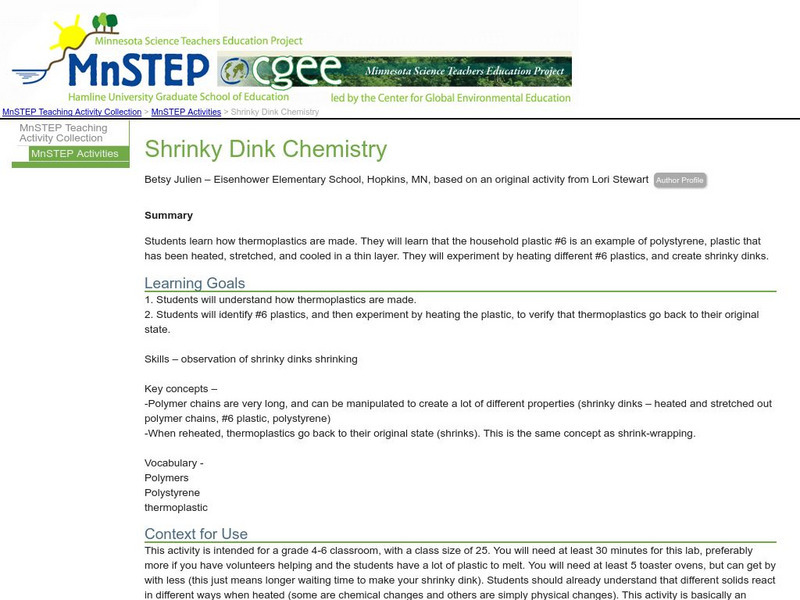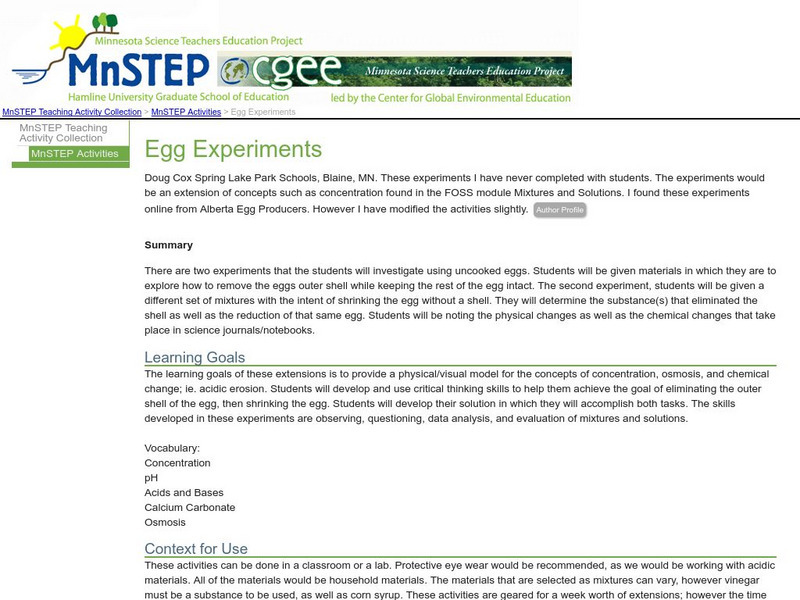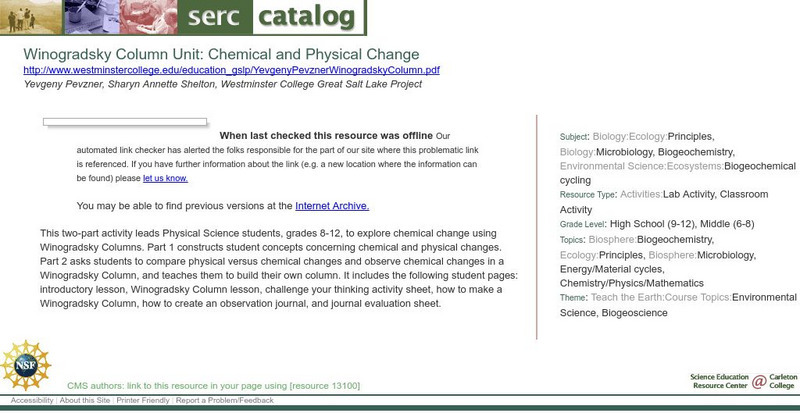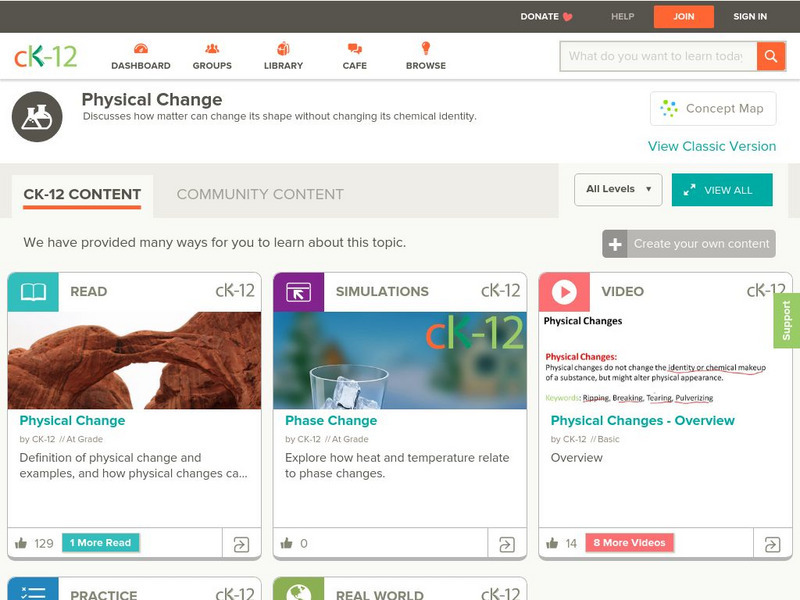CK-12 Foundation
Ck 12: Properties of Matter
[Free Registration/Login may be required to access all resource tools.] In this online tutorial, students will begin to understand a substance according to its physical properties. Learn to distinguish between extensive and intensive...
Utah Education Network
Uen: Science Detectives
Students are given a scenario for this lesson where they must use investigative skills like a detective would to decide whether changes that happen to objects in the story are physical or chemical. They then conduct an experiment with...
BBC
Bbc Schools: Ks2 Bitesize: Science: Materials: Changes in Materials
Help solve the mystery and find the missing crystal. Following the activity, read more about chemical and physical changes, and then take a quick quiz to check for understanding.
American Chemical Society
Middle School Chemistry: Lesson Plans: What Is a Chemical Reaction?
After observing a demonstration of a chemical reaction between a burning candle and the oxygen in the air, students use atom model cut-outs to model the reaction and see that all the atoms in the reactants show up in the products.
Utah State Office of Education
Utah Science: Changing Matter
Matter changes both physically and chemically on a fairly regular basis. Through these activities students will challenge their understanding of the changes that may take place with different types of matter.
American Chemical Society
Inquiry in Action: Investigating the Line
Students will observe the non-mixing of colored solutions by using M&M's in this lab activity. Lab activity includes both student and teacher instruction sheets.
American Chemical Society
Middle School Chemistry: Lesson Plans: Using Dissolving to Identify an Unknown
Students first observe a solubility test between salt and sugar. Next, they design their own solubility test with four known crystals and an unknown to discover the identity of the unknown.
American Museum of Natural History
American Museum of Natural History: Grow Rock Candy
Students can carry out an investigation using sugar and water to determine whether heating or cooling a substance may cause changes that can be observed. This activity reinforces the ideas that the properties of materials can change when...
University of Florida
Florida Museum of Natural History: Kitchen Science
This guide focuses on everyday substances and how we can change their properties by adding heat or cold, physically manipulating them, or mixing them together.
Concord Consortium
Concord Consortium: Stem Resources: Baggie Chemistry
Observe chemical and physical changes with this lab using everyday household items. Lab includes procedure and online data collection tool where answers can be saved and graded by teacher.
Georgia State University
Georgia State University: Hyper Physics: Heat of Vaporization
A discussion of the vaporization process and the energy changes which accompany the process. Includes an informative graphic and a discussion of how to determine the heat of vaporization.
Georgia State University
Georgia State University: Hyper Physics: Phase Change Concepts
An indexing page for the HyperPhysics site. This page includes links to a variety of pages at the site which contain information related to phase changes. Each individual page consists of informative graphics and clear explanations.
NC State University
The Science House: Chromatography of Foods [Pdf]
Students will practice the technique of chromatography by separating a mixture of FD&C dyes. Questions related to the experiment along with the answers are available for use by the teacher.
Science Education Resource Center at Carleton College
Serc: Combustion or Oxidation
Students burn a magnesium strip to reinforce the concepts of chemical vs. physical changes, reaction types, conservation of mass, formulas and equations, stoichiometry, Lewis structures, and to explore the concept of oxidation/reduction...
Science Education Resource Center at Carleton College
Serc: Classifying Chemical and Physical Changes in Various Materials/substances
In this classroom lab, students will investigate the characteristics of a chemical change. Students will also provide a definition of what constitutes a physical change through observation of several examples. Students will use/create...
Science Education Resource Center at Carleton College
Serc: Mystery Powders: An Introduction to Physical and Chemical Properties
Students will complete various tests of five mystery powders to develop an understanding of physical and chemical properties. They will record their observations and develop hypotheses as to what they think each mystery powder is and...
Science Education Resource Center at Carleton College
Serc: Making Your Own Snowflake in a Jar
For this activity, students will learn about supersaturated solutions. They will observe the beginning formation of crystals as the solution cools and by the next day, the students will see the formation of a snowflake made by the crystals.
Science Education Resource Center at Carleton College
Serc: Mn Step: Shrinky Dink Chemistry
In this lesson, students first learn about thermoplastics, and about polystyrene in particular, which is a #6 plastic. They will then heat different #6 plastics to create shrinky dinks. As they are heated, they shrink, which is a...
Science Education Resource Center at Carleton College
Serc: Egg Experiments
Two experiments where students investigate with uncooked eggs. In the first investigation, they explore how to remove the eggs outer shell while keeping the rest of the egg intact. In the second, students attempt to shrink the egg...
Science Education Resource Center at Carleton College
Serc: Winogradsky Column Unit: Chemical and Physical Change
This two-part lesson explores chemical change using Winogradsky Columns. Part 1 constructs student concepts concerning chemical and physical changes. Part 2 asks students to compare physical versus chemical changes and observe chemical...
Other
English Montreal School: Chemical vs. Physical Changes: Elements vs. Compounds
A laboratory experiment where students classify matter into a homogenous mixture, heterogeneous mixture, solution, or pure substance. Also students will test for physical and chemical changes.
Clackamas Community College
Clackamas Community College: Distinction Between Chemical and Physical Change
Explains the difference between chemical and physical changes.
Chem4kids
Chem4 Kids: Chemical vs. Physical Changes
Identify chemical and physical changes and the differences between the two.
CK-12 Foundation
Ck 12: Chemistry: Physical Change
[Free Registration/Login may be required to access all resource tools.] Covers reversible and irreversible physical changes.


